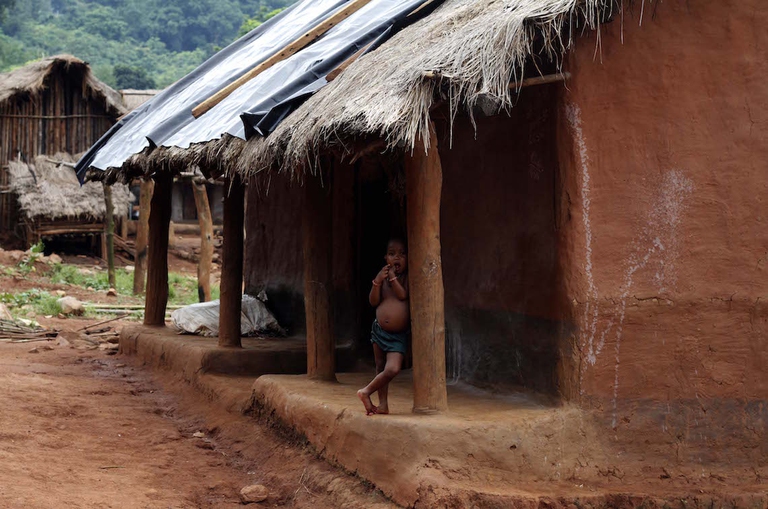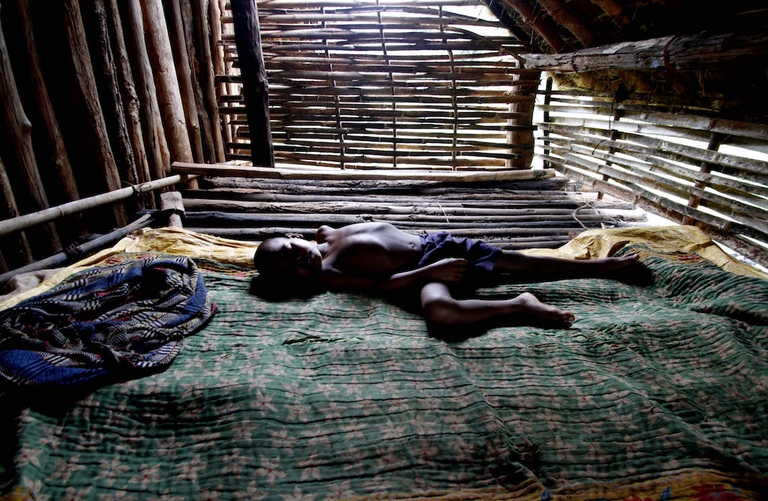
A special report from the Yuqui territory delves deep into the dreams, challenges, joys and sadness of one of Bolivia’s most vulnerable indigenous groups.
India recently completed 69 years as an independent nation. Over these years the country has made progress in almost all fields and has become the world’s fastest growing economy. But the country still struggles to attain freedom from hunger and overcome the issue of malnutrition that results in the loss of about 3 million young
India recently completed 69 years as an independent nation. Over these years the country has made progress in almost all fields and has become the world’s fastest growing economy. But the country still struggles to attain freedom from hunger and overcome the issue of malnutrition that results in the loss of about 3 million young lives every year.
When India was preparing to celebrate its 70th Independence Day on the 15th of August, news emerged that 19 children of the Juang tribe had died of malnutrition in a single hamlet, Nagada, in the eastern state of Odisha. This had occurred over a period of three months between April and the early weeks of July.
The hamlet is situated in an area rich in chromite ore and is a hub of chromite mining and related industries. Even though this activity generates high revenues for the country, this hamlet remains inaccessible to the administration and government officials in charge of developmental schemes and services due to the absence of a connecting road. One has to walk almost ten kilometres on hilly tracts to reach the village.
“The nineteen deaths in Odisha are a grim reminder of what still needs to be done and the long journey we still need to cover,” said Neerja Chowdhury, member of the Citizens Alliance Against Malnutrition India.
After the Nagada incident, the Odisha government issued an order to all district level authorities to investigate villages where malnutrition and hunger are acute. In fact, there have been cases – such as 21 deaths (including six children) over the course of two months in a gram panchayat (cluster of villages) in Kalahandi district, allegedly due to diseases caused by alimentary deficiencies – that aren’t counted as malnutrition deaths.
Even though several such cases go unreported, “malnutrition has remained the gravest issue” threatening the future generations of the country, according to Dillip Das of Antoday, a non-profit working for development of the tribal communities of Kalahandi. Despite the fact that there has been progress in areas such as child immunisation and reduced stunting, reports estimate that more than 500,000 children die of malnutrition every year in India.
Of a total 122 million children under five in the country, over 38 per cent are stunted and over 15 per cent come under the wasting category, according to the latest Global Nutrition Report. While 28 per cent of newborns have low birth weight, a little under half of women of reproductive age are anaemic.
Prime Minister Narendra Modi, who was in the middle of his Africa tour when the issue of the tribal children’s deaths erupted, expressed his concern over the problem. He called upon the Indian diaspora in South Africa to work together “to fight poverty, malnutrition, disease and hunger” in India.
A focused approach is needed. Though many of Indian states have already taken the initiative, “now the time has come to consider setting up ‘Nutrition Missions’ in all states, directly under the Chief Ministers,” suggests Chowdhury. “To give the problem of malnutrition a higher priority and also facilitate a coordinated effort by several ministries who are involved”.
Under-nutrition, in the wake of climate change and its impact on food production, is projected to grow as a mass killer in the country by 2050, according to a study supported by the University of Oxford. There is no option other than prompt action to deal with the issue.
Siamo anche su WhatsApp. Segui il canale ufficiale LifeGate per restare aggiornata, aggiornato sulle ultime notizie e sulle nostre attività.
![]()
Quest'opera è distribuita con Licenza Creative Commons Attribuzione - Non commerciale - Non opere derivate 4.0 Internazionale.
A special report from the Yuqui territory delves deep into the dreams, challenges, joys and sadness of one of Bolivia’s most vulnerable indigenous groups.
The Yuqui people of the Bolivian Amazon fight not only to survive in the face of settlers, logging and Covid-19, but to preserve their culture and identity.
Jair Bolsonaro is accused of crimes against humanity for persecuting indigenous Brazilians and destroying the Amazon. We speak to William Bourdon and Charly Salkazanov, the lawyers bringing the case before the ICC.
Activists hail the decision not to hold the 2023 World Anthropology Congress at a controversial Indian school for tribal children as originally planned.
Autumn Peltier is a water defender who began her fight for indigenous Canadians’ right to clean drinking water when she was only eight years old.
The pandemic threatens some of the world’s most endangered indigenous peoples, such as the Great Andamanese of the Andaman and Nicobar Islands in India.
The Upopoy National Ainu Museum has finally opened. With it the indigenous people of Hokkaido are gaining recognition but not access to fundamental rights.
A video shows the violent arrest of indigenous Chief Allan Adam, who was beaten by two Royal Canadian Mounted Police (RCMP) officers.








